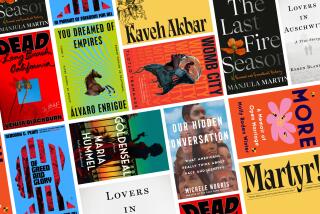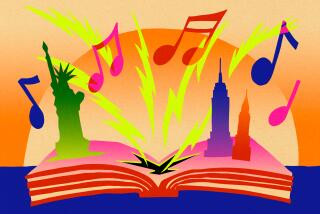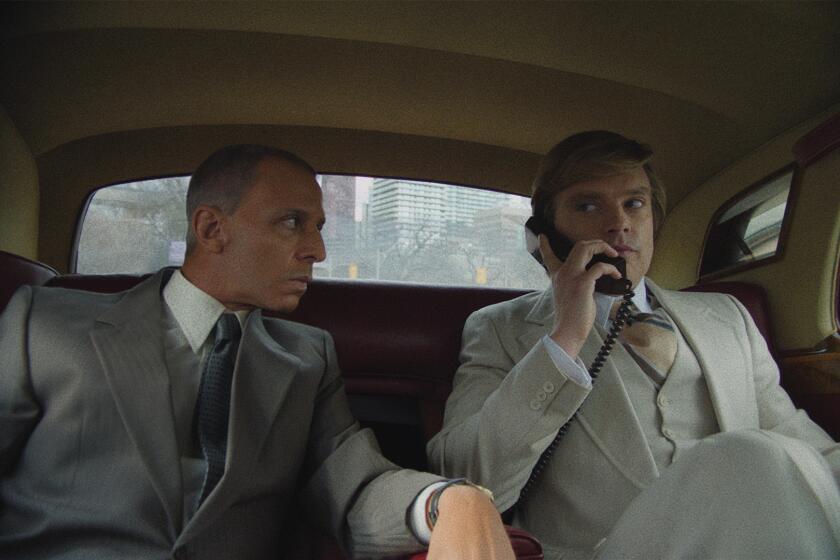Revisiting Woodstock
- Share via
Woodstock
Peace, Music & Memories
Brad Littleproud and Joanne Hague
Krause Publications: 256 pp., $24.99 paper
What started as a music festival became a testing ground for the counterculture, a place to create an alternative social model, if only for a few days. Could it happen again? Never, writes Artie Kornfeld in his introduction to this volume of photos and memorabilia. Woodstock was not a place, he writes, it was a state of mind. Somewhere between 400,000 and 500,000 people came to the festival, and for much of the time it rained. Many of the photos -- kids, naked swimmers, dancers, crowds and performers -- are set in muddy fields (there’s a smiling Max Yasgur, whose 600 acres look a little worse for wear post-festival) with sodden blankets and quite a bit of trash. Too many of the news clips are negative -- traffic jams, families separated in the crowds, drug-related emergencies. But there’s no denying the joyous, beatific faces of the participants despite the rain and the crowds. You wish you had been there.
Woodstock Revisited
50 Far Out, Groovy, Peace-Loving, Flashback-Inducing Stories From Those Who Were There
Edited by Susan Reynolds
Adams Media: 240 pp., $12.95 paper
Susan Reynolds (no relation) went to Woodstock. These essays, written by others who were there, reveal the wide range of backgrounds represented. Not everyone had smoked pot and listened to rock ‘n’ roll their whole lives like Michael Lang, a hippie with some experience producing music festivals, who was one of the men who made it happen.
Reynolds, who grew up on the banks of the Allegheny River, was “never a hippie,” had never smoked pot and went on after Woodstock, like so many others, to have a conventional job and life. She found that wherever she traveled, people were fascinated to find that she had been there, and wanted to know more. (The book also contains a section of Woodstock stats: the traffic backup was 20 miles; advance tickets cost $18. For the three-day festival, there were two births and no violent crimes.) One of the contributors, Lisa Law, came from the New Mexico commune called the Hog Farm, which provided food for the crowds. (Yasgur provided milk, eggs and yogurt each day.) Law was seven months’ pregnant at the time. Her husband brought the family tepee. Peter Faur, another essayist, went on to become a reporter and the vice president of communications at a Fortune 500 company. He writes that the two most important things he learned at Woodstock were: Never judge a person by how they look, and music “has the power to keep us young. I’m fifty-nine now,” he writes, “but I can’t hear the opening riff from the CSN&Y version of ‘Woodstock’ without feeling nineteen again.”
More to Read
The biggest entertainment stories
Get our big stories about Hollywood, film, television, music, arts, culture and more right in your inbox as soon as they publish.
You may occasionally receive promotional content from the Los Angeles Times.










